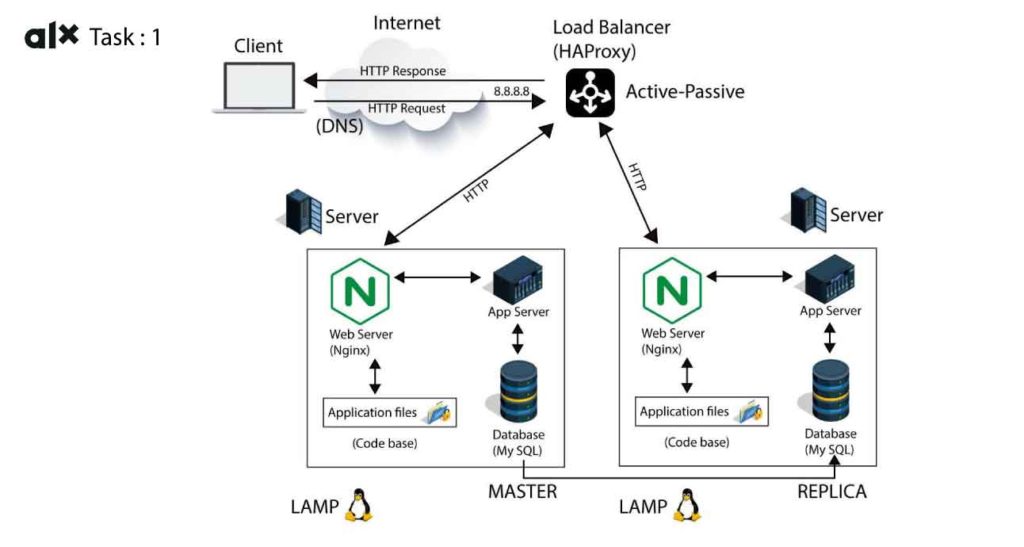Distributed Web infrastructure

Why Adding More Components:
- Each new component serves a specific purpose to make our system work better or handle more users.
- More elements can improve reliability, performance, and scalability.
Load Balancer Distribution Algorithm:
- A load balancer is like a traffic cop for our website, directing requests to different servers.
- It uses a distribution algorithm to decide how to send requests.
- Common algorithms include Round Robin (sending requests in order), Least Connections (to the least busy server), and IP Hash (using client IP).
Active-Active vs. Active-Passive:
- Active-Active means both servers are actively working, sharing the load. If one fails, the other takes over.
- Active-Passive has one active server and one standby. If the active one fails, the standby kicks in.
Primary-Replica (Master-Slave) Cluster:
- It’s like having a boss (primary) and an assistant (replica) for our database.
- Primary node receives all the updates, and the replica copies everything to stay in sync.
Difference between Primary and Replica:
- Primary handles data changes (writes), while the Replica only reads data.
- For the application, the Primary is like the editor, and the Replica is the reader.
Issues with the Infrastructure:
Single Point of Failure (SPOF):
- SPOF is where if one part fails, the whole system stops working.
- In this setup, if the load balancer or primary database goes down, the entire system is at risk.
Security Issues:
- No firewall means there’s no barrier to protect our system from unauthorized access.
- No HTTPS means data sent between users and the system is not encrypted, risking data interception.
No Monitoring:
- Without monitoring tools, we can’t keep an eye on how our infrastructure is doing.
- We won’t know if a component fails or if there are performance issues until it’s too late.
